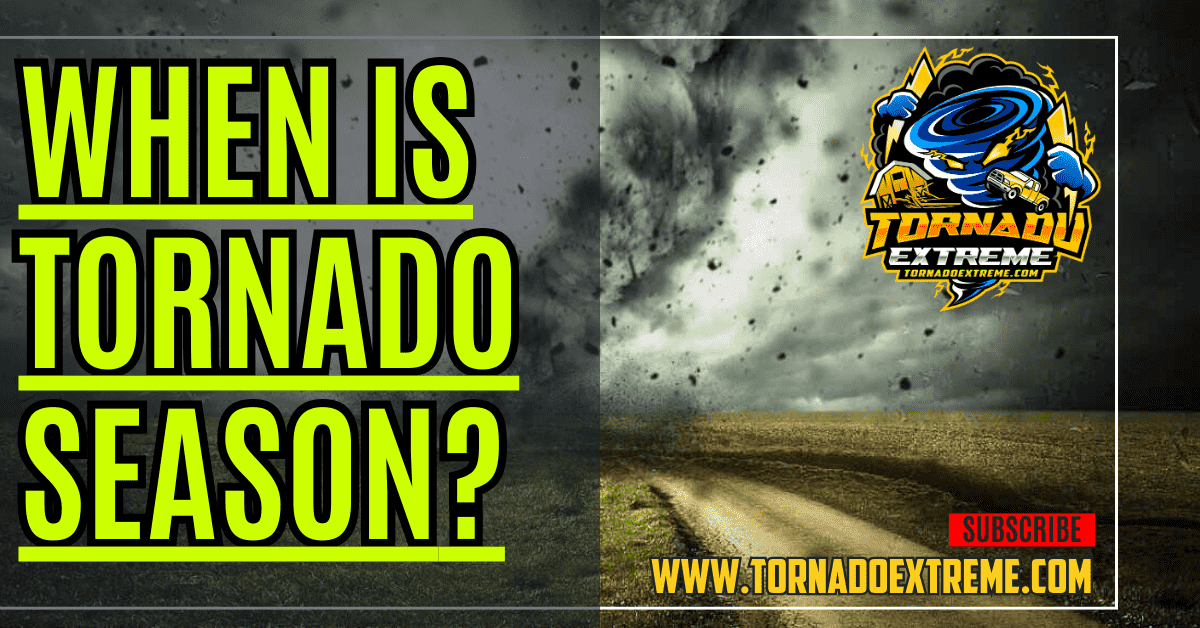Tornadoes are some of the most destructive forces of nature, and for anyone who lives in an area prone to them, it’s a time of year that brings with it a lot of fear. With one single tornado able to wipe entire towns off the map, it’s important that we understand how they work in order to stay safe once the season hits. In this post, we will demystify tornado season by breaking down the science behind tornadoes, how they form, and what conditions are necessary for them to occur.
We’ll also provide everything you need to know on how to prepare for tornado season, what to do during a tornado warning, and how to stay safe afterwards, including how to avoid flying debris. By understanding the perfect storm that creates tornadoes, you’ll be better equipped to face this season with confidence.
When is Tornado Season? Introduction to tornadoes and their formation
Of all the weather phenomena out there – torrential downpours, blistering heat waves, or heavy snow storms – few strike as much raw fear into people as tornadoes do. These swirling whirlwinds can cause utter devastation often within seconds and leave behind landscapes that would make for eerie movie settings.
Unfortunately as well as their fearsome power they also have little warning time before they get going. The only way we can fully appreciate their threat and avoid being caught up unawares is by understanding why they happen in the first place.
The majority of these vicious vortices will form within severe thunderstorms. A menacing sight even without knowing what lies hidden inside it: roiling dark clouds bristling with lightening forks like an armful of javelins. Apart from looking ominous these storms possess another key quality needed for producing twisters- instability.
The warm moist air rising quickly into high cooler layers creates an unstable atmosphere which then interacts with wind shear (change in direction and speed). And that’s when things start looking really bad for us.
Once within the storm, a powerful updraft will cause horizontal air rotation. Likewise to how our planet spins on an axis when it’s pushed its atmosphere will do the same. This spinning column of air is known as a mesocyclone and it acts as an early warning sign for forming tornadoes.
The stronger the updraft becomes, the more violently this rotating air is hurled upwards and stretches out. These conditions in turn cause a tornado funnel- from cloud to floor of earth- to take shape.
Of course we know that none of this explains what determines a particular tornado’s path and intensity. As well as many other complicated factors such as moisture content or wind shear, topography for example can also play a part. But understanding even just these few basics could be enough for meteorologists to provide forecasts and sound warnings in time.
And if you’re one who lives in somewhere where they happen often then knowing all about this stuff could save your life someday! So let’s all commit it to memory so we can go into the next season prepared and safe.
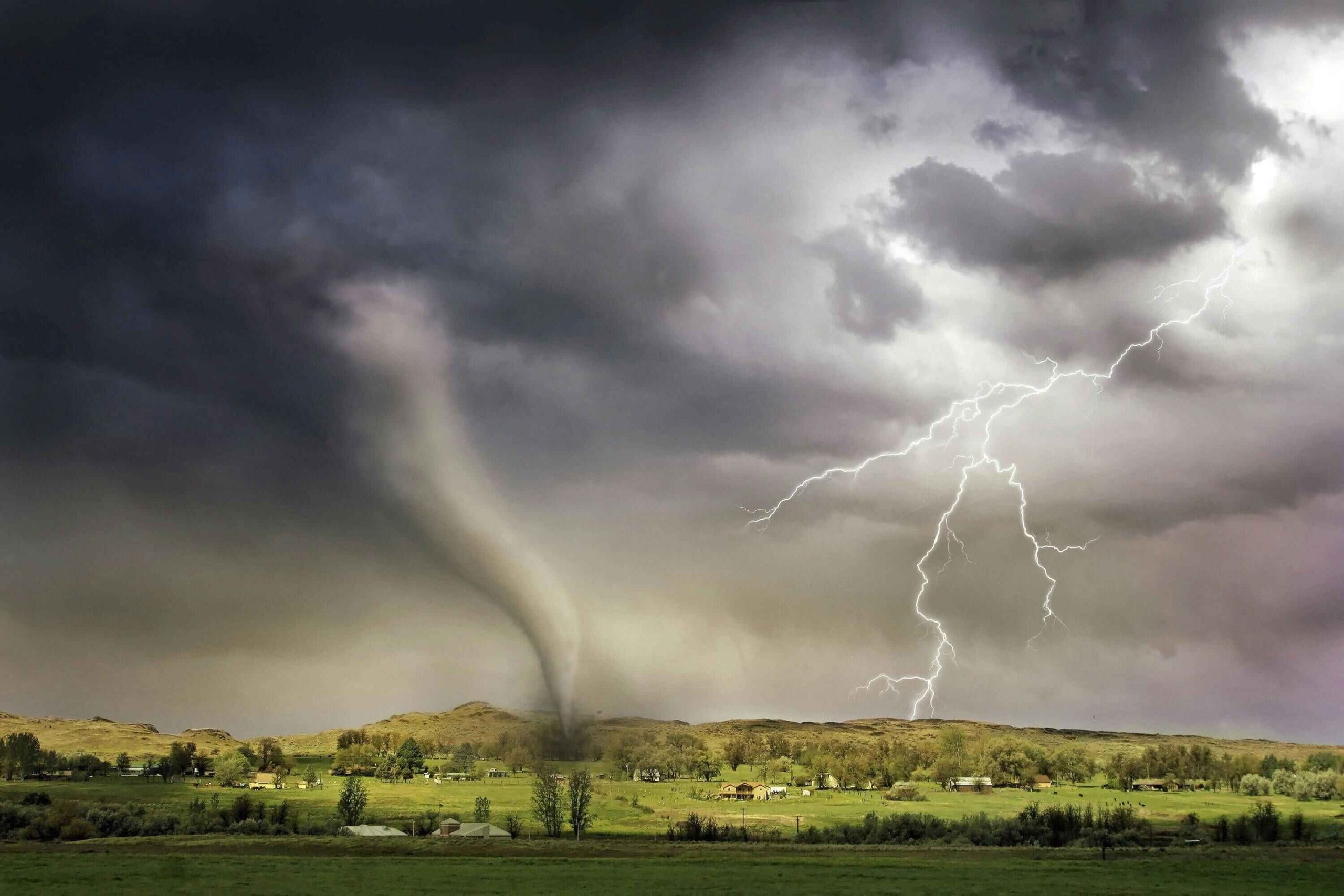
When is Tornado Season in the US?
In the US it generally starts somewhere around March then lasts till June with peak activity coming in April and May. However lately there have been some shifts observed within these patterns. Some places now get hit very late into Fall months by things like hurricanes or blizzards but rarely by tornadoes still after August. Hence why climate experts are investigating what these underlying factors are driving this shift.
There are many factors that contribute to the unpredictability of tornado season. One of which is climate change. As global temperatures keep rising, weather patterns grow more unstable and erratic. Which could possibly extend or change tornado seasons entirely. The second factor that plays into this is technology. With the help of technology, scientists can now keep track and predict when tornadoes may hit in the future.
It’s smart for both researchers and communities to understand the ins and outs of these deadly storms. By staying ahead of possible danger zones, individuals can take better safety precautions, advised by the National Oceanic and Atmospheric Administration, to limit any harm done from them across the U.S.
See also: Which State Has the Most Tornadoes and Why It Matters
Where Do Tornadoes Occur at Which Times
Tornadoes can touch down in a variety of locations, but the central part of the United States, also known as Tornado Alley, sees them the most often. This region includes Texas, Oklahoma, Kansas, Nebraska and South Dakota where they see both the highest number and strongest F5 tornadoes on record. Here they occur mostly during spring and early summer, a period marked as the peak tornado season, when warm moist air from the Gulf of Mexico meets cool dry air from Canada. These ingredients create an environment that is ripe for severe storms and tornado activity.
In addition to Tornado Alley states like Mississippi and Alabama experience two peaks in tornadic activity each year: one in late spring to early summer (like their neighbors) and another in November. Florida frequently experiences storm impacts during hurricane season as well as other parts of the United States along the Gulf Coast during late summer and fall due to hurricanes.
Other countries like Bangladesh and Argentina — both with monsoon climates — also see a high frequency of tornadoes on a yearly basis. Knowing when these hazards are likely to occur is a key component of being prepared.

What Time of Day do Tornadoes Occur?
The time at which a tornado strikes depends on many factors; including location, atmospheric stability, upper level dynamics, among others… In general however they are most frequently observed between 3 pm – 9 pm local time in any given area.
This is usually when daytime heating has been greatest causing buoyant parcels of air near surface level to rise rapidly upwards through unstable layers aloft (caused by cool/dry/cold front). However don’t let this fool you into thinking tornadoes only happen before dinnertime! Just because it’s darker outside doesn’t mean it isn’t capable of producing severe weather… A significant portion actually develop between 8pm-midnight so make sure you stay weather aware even if it seems like threat has passed.
Why Does Tornado Alley Attract So Many Tornadoes?
Tornado Alley, the central United States region famous for its high amount of tornadoes, is a target for these violent storms because of multiple intersecting geographic and atmospheric factors. One factor is the crash between warm air from the Gulf of Mexico and cold air from the Rocky Mountains, a phenomenon extensively studied by the National Oceanic and Atmospheric Administration. This severe difference in air masses creates a breeding ground for heavy thunderstorms capable of creating tornados.
Moreover, Tornado Alley’s flat terrain lets these storm systems move without obstruction across large distances, meaning that there are so many chances for tornados to form and sustain themselves. The special blending of geography and climate creates an ideal environment for supercell thunderstorms to sprout; these are the most likely storms to produce a tornado with their rotating updrafts and intense wind shear.
On the whole, Tornado Alley is vulnerable to tornadoes because of a complicated interplay between meteorological conditions and geographical components which make it a very active area during tornado season. Appreciating how all these parts move together can help minimize damage caused by these dangerous weather events.

Where is Tornado Alley?
Tornado Alley happens to be a casual name for the region in the central United States known for its frequent and devastating tornado activity. Stretching from Texas into parts of Oklahoma, Kansas, Nebraska, and South Dakota this place holds a lot of tornadoes for us. But why? Well, warm and moist air from the Gulf of Mexico collides with cool and dry air from Canada here. This collision creates perfect conditions for severe thunderstorms and tornado formation.
Now what sets Tornado Alley apart from being any old “tornado prone” area is its supercell thunderstorms. These particular stone cold badboys are powerful, long-lasting rotating updrafts that can generate intense tornadoes all by their lonesome. So when they get together with their unstable atmospheric conditions and complex topography it’s safe to say things get pretty chaotic.
The best way to prepare yourself for an unpredictable season like this is to understand it’s unique characteristics. You need to know how it works so you have a fighting chance against the unknown nature that is storm season.

Which States Have the Most Tornadoes?
When it comes to tornadoes, some states just have ‘em. And when you’re talking frequency, nobody does it quite like Texas. Thanks to its expansive open spaces and flat land, which creates ideal conditions for tornado formation, the Lone Star State tops the list of most tornado-prone states in America. Oklahoma is also located smack-dab in the middle of Tornado Alley and has a reputation for twisters, as does Kansas with its vast plains.
Florida isn’t exactly known for its stormy weather – hence the name The Sunshine State – but it’s actually one of the most conducive places in America for supercell thunderstorms and tornado formation. This is thanks to the state’s unique geography: warm moist air from the Gulf of Mexico meets cooler drier air from up north, creating an unstable atmosphere that can quickly turn into a chaotic situation.
Similarly to Florida, Alabama and Mississippi both fall within regions where frequent tornadoes are known to occur due to positive meteorological factors. These insights highlight how different geographical features across different states can affect how much we need to be on guard against these violent funnels of wind.
See also: Green Sky Tornado: Why Does the Sky Turn Green?
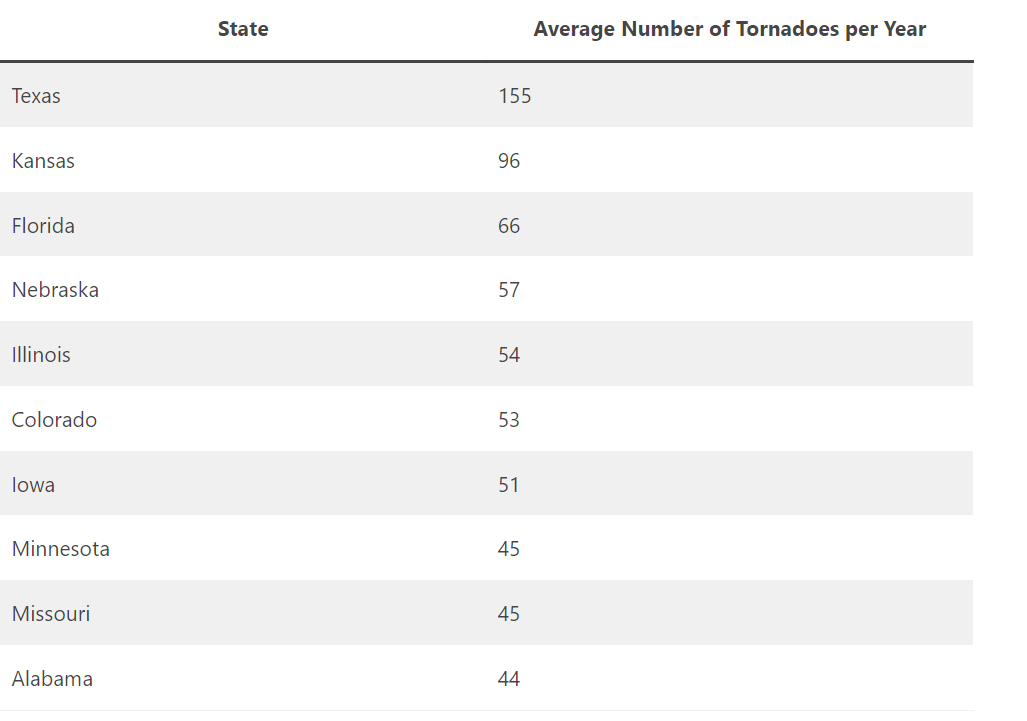
When is Tornado Season in Texas? -155 tornadoes on average
Everything’s bigger in Texas – even their INCREDIBLY dangerous storms. With an average of 155 tornados a year, it sounds like your chances are pretty high at witnessing one of nature’s deadliest forces while visiting (or living) here! While many people think that this type of weather only strikes during Spring Break season, that couldn’t be further from the truth. So if you were planning on spending this summer tubing down rivers all throughout Texas – you might want to re-think your plans.
It may seem obvious at this point but we’ll say it anyway: It really doesn’t matter what time or day it is because you should always take cover if there are signs of a tornado forming. With that being said, they are much more likely to occur during the months of April through June. But let’s be real… tornados are pretty unpredictable no matter how you slice it.
The amount of these destructive winds that hit Texas year after year really puts into perspective how important it is to have a plan in place for when one makes its way towards your area. From knowing where you will seek shelter to making sure you have all the supplies needed to survive for an extended period of time, it’s always better to be safe than sorry! And with all the new technologies and warning systems we have now compared to before, we at least have a fighting chance. The first step towards protection is simply understanding when tornado season occurs so that we can always be ready!
When is Tornado Season in Kansas? – 96 tornadoes on average
Kansas’ tornado season typically reaches its climax between March and June, with May being the most active month. On average, Kansas experiences about 96 whirlwinds per year, which makes it one of the most susceptible to these types of storms in the United States. Such a menacing period is characterized by weather extremes and atmospheric conditions that are ideal for twisters.
When this time comes around, people living in Kansas are urged to brace themselves with accurate weather forecasts. It’s important to have a plan and know what exactly should be done when they get a storm warning. Advancements in technology have significantly improved early warning systems so they can take shelter more quickly and save more lives. Furthermore, understanding the way these storms form gives people enough time to be proactive about their safety measures.
When is Tornado Season in Florida? – 66 tornadoes on average
Florida’s seasons for twisters usually get busy from late winter through early summer. The most frequent times, often referred to as the peak tornado season, occur during March, April and May as warm humid air from the Gulf of Mexico meets cooler drier air from northern directions. There are approximately 66 whirlwinds in Florida annually making it one of the states with highest frequency.
Though the whole state is prone to them, certain areas like Central Florida experience them more than others due to their unique combinations of geographical features and atmospheric conditions. Flat terrain alongside warm bodies of water creates very favorable circumstances for tornado creation there. Additionally, sea breezes and thunderstorm complexes can amplify chances during these times too. This makes it very crucial for residents to stay informed when that time comes.
Understanding how twisters work will help you take protective measures before its too late such as boarding up house windows or evacuating completely if necessary.
When is Tornado Season in Nebraska? – 57 tornadoes on average
Being a part of Tornado Alley means Nebraska experiences tornados from late spring through early summer. With an average of 57 of these per year, you could say Nebraska is used to the negative impact they bring. Most times occur between late May and early June when warm moist air from Gulf of Mexico meets cool dry air from the north.
Though it seems as if there is a typical tornado season, scientists have found that timeframes are shifting due to unpredictable outbreaks. Studies are being done on how climate change can affect regular patterns in tornado seasons so it’s important for residents to stay informed and prepared for any possible natural disaster.
From April to June each year, tornado season in Illinois is at its peak. It’s during these months that the conditions align for the formation of tornados. Often times, warm humid air from the south will mix and collide with cool dry air from the north. This volatile mixture causes severe thunderstorms and supercells which spawn tornados.
When is Tornado Season in Illinois? – 54 tornadoes on average
Illinois sees an average of 54 tornados each year, with the month of May typically seeing the most tornadoes. Knowing when they are most likely to appear can be life-saving for residents and help minimize their impact. The state has already dealt with its fair share of extremely damaging twisters like the Tri-State Tornado in 1925 or the outbreak of April 2015. But as climate patterns continue to change, past experiences can only tell us so much.
Being aware of weather forecasts and heeding any weather alerts or watches issued by local authorities should be your top priority this tornado season in Illinois. Measures such as creating a family emergency plan or stocking up on supplies can greatly reduce risk if one does happen to hit where you live. With each new day bringing new challenges it’s important we remain proactive against nature’s wrath before it strikes again.
When is Tornado Season in Colorado? – 53 tornadoes on average
Colorado’s tornado season typically occurs from late spring to early summer, with its peak usually happening during May and June. These months are the perfect time for the development of severe thunderstorms. However, you don’t have to worry about these kinds of storms too often in Colorado, as it only experiences an average of 53 tornados each year. Nevertheless, you should always stay informed and prepared during this season.
The unpredictable nature of the state’s topography makes forecasting when a tornado will appear difficult. The mountainous terrain can change how a storm grows and behaves, leading to unexpected results that may catch people off guard. As climate change continues to affect our world, the weather patterns we’ve grown accustomed to will also go through changes. This could make monitoring and forecasting more difficult than they already are. If we fail at understanding these new conditions—along with their relationship with tornado activity—then response teams won’t be able to work fast enough in emergencies.
When is Tornado Season in Iowa? – 51 tornadoes on average
Usually peaking in late spring and early summer, Iowa’s tornado season features its highest rates between May and July. It’s during this time that warm moist air from the Gulf of Mexico smashes into cold dry air from Canada; creating a volatile atmosphere perfect for storms. In fact, Iowa averages around 51 tornados every year due to this matchup.
Residents must be vigilant at all times today since these natural disasters can occur without warning. Knowing how local warning systems work is crucial if we hope to steer clear from danger as much as possible—or at least limit its impact on our lives.
With Iowa facing an average rate of 51 tornadoes annually, there’s no other option but to stay informed about severe weather patterns and follow instructions given by local authorities whenever a storm approaches.
When is Tornado Season in Minnesota? – 45 tornadoes on average
The end of spring to the beginning of summer is when you can expect tornado season in Minnesota. Tornados typically peak during June, but each year the state experiences an average of 45 tornados. This means you’ll have to stay cautious throughout the months leading up to it, as well.
Minnesota is considered one of the more active states in terms of tornados, and it could be because its atmosphere acts like a house party. The warm moist air from the Gulf of Mexico tends to get real groovy with cool dry air from Canada, creating a wild place where tornados feel right at home.
The chaos doesn’t stop there though—tornadoes don’t care about sticking to schedules or being predictable. While there may be a peak, they can definitely show up whenever they want during warmer months. It gets even worse; technological advancements barely make a dent on how unpredictable these natural disasters are.
When is Tornado Season in Missouri? – 45 tornadoes on average
Missouri’s tornado season typically spans from March to June, with April and May being the peak months. In these two months there are an average of 45 tornadoes in the state. The stats may seem alarming, but it’s important to remember improvements in technology have helped detection and warning systems. With more time to prepare residents can properly respond and stay safe.
It’s worth mentioning that climate change seems to be having an effect on storm frequency and intensity in Missouri. Some studies show that as temperatures rise globally it may create conditions more favorable for severe weather events like tornadoes. More research is needed to make a strong connection between climate change and tornados activity.
However, if we look at historical data for the region we can work towards improving resilience and disaster preparedness plans. By analyzing past trends communities will have better understanding for how often they happen in the area. This allows them to make informed decisions when planning mitigation strategies and infrastructure improvements. With this information they’ll know what needs to be done minimize damage or spread awareness about these natural disasters before they strike again
When is Tornado Season in Alabama? – 44 tornadoes on average
Generally speaking, there’s a high chance of encountering a storm in Alabama during the spring months. Out of all the states, this region experiences severe weather the most frequently. To be more precise, about 44 tornadoes come through every year.
Some are small and relatively harmless while others are massive and devastating (EF-5 to be exact). Preparation is key for residents as these storms can occur suddenly. While meteorologists do their best to keep people informed, it’s also up to individuals to have emergency supplies such as food, water and flashlights ready.
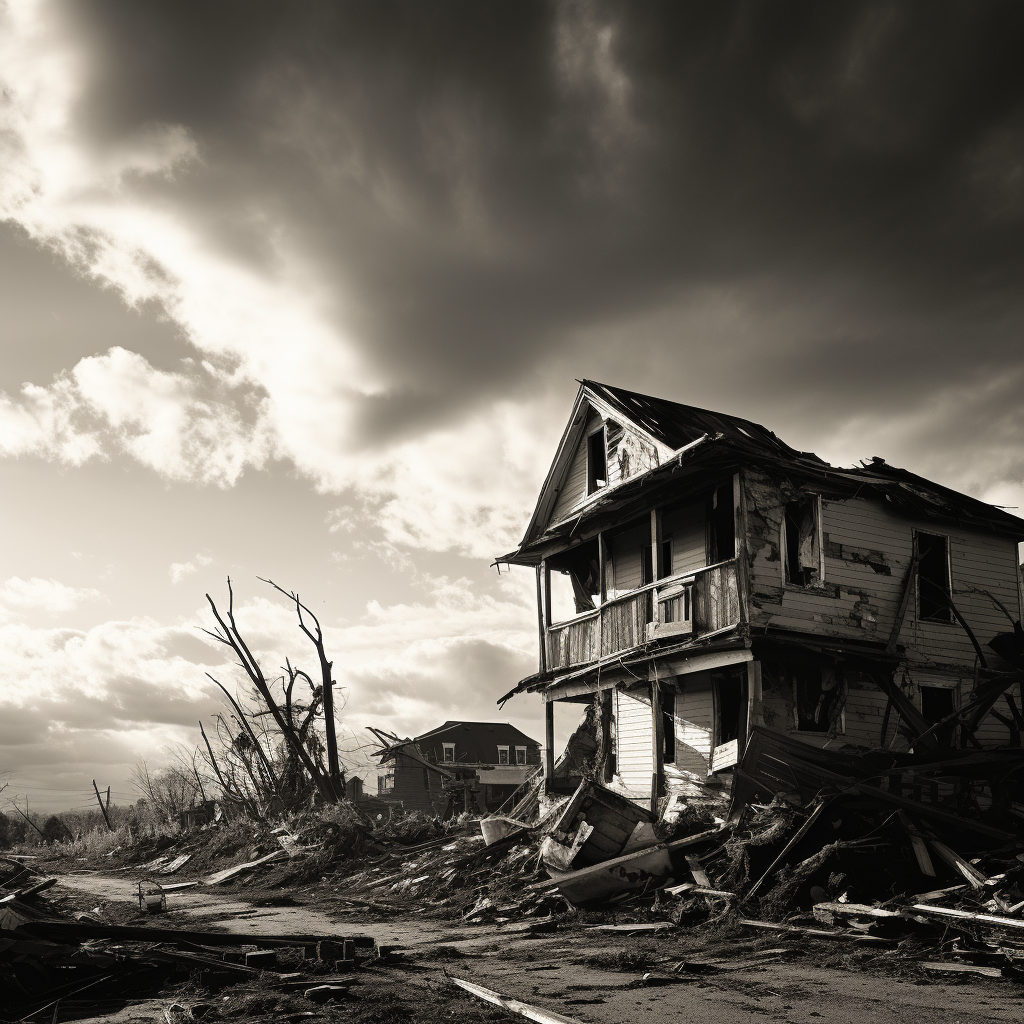
Factors that contribute to tornado formation
Witnessing a tornado in real life is enough to give anyone goosebumps. They’re terrifying yet fascinating… but how exactly do they form?
To begin with, air instability plays a big role. When warm and cool air meet things can get interesting very quickly. The warmer stuff rises rapidly into thunderclouds that continue accumulating due to condensation.
The presence of wind shear further enhances the probability of a twister being born. This refers to winds at different altitudes behaving differently from one another – typically blowing at varying speeds or directions depending on height.
A triggering mechanism is also necessary for the rotation process to start (typically a cold front is responsible for this). It introduces colder winds which can spark an intense thunderstorm capable of forming tornados.
Lastly, topography has some effect on them too. If we picture hills or mountains we’ll notice that they don’t allow wind flow freely through them like flat land does… this could lead to stronger destruction caused by tornadoes if they hit those areas first.
Knowing these factors helps prepare local communities prone to these types of storms better understand how they form and what could potentially stop or prevent them altogether. Overall public safety will benefit greatly from studying their creation process… whether its improving predictions or developing safer infrastructure.
Understanding atmospheric conditions needed for tornadoes
Several key atmospheric ingredients must come together harmoniously to create the ideal environment for tornadoes to develop. First and foremost, it’s essential to know when a tornado could happen, and a collision between warm, moist air and cool, dry air is a key indicator. This clash often occurs when a warm front encounters a cold front, leading to a sharp temperature contrast.
Next, wind shear, a focus of NOAA studies, plays a critical role in tornado genesis. Wind shear refers to the variation in wind speed and direction with height. A significant change in wind speed as we ascend through the atmosphere creates a twisting motion, creating a whirlpool-like effect that can be unleashed any second.
Furthermore, an unstable atmosphere is crucial for tornado formation. Instability arises when warm air is able to rise rapidly, creating chaos not unlike what you would see at the center of the earth’s core where all of our known elements originated from . This vertical motion allows for development of towering cumulonimbus clouds which are often associated with thunderstorms and severe weather.
Lastly, “a triggering mechanism,” Yeah I’ll put that in quotes because that just sounds like something out of an action movie.. like an explosion -a thunderstorm or supercell- will amplify any already strong winds into full force tornadic conditions.
Understanding these atmospheric conditions can aid meteorologists and storm chasers in predicting and tracking tornadoes – even though no one should be chasing them unless they have their life insurance premiums paid up… Our storm containment facilities barely keep them locked inside once free how would some yahoo think they’d stay safe?- ultimately helping save lives by telling people far enough away from them so they don’t get caught off guard.. We need training on how to navigate these tumultuous weather patterns as much as we need practice ducking under desks during earthquake drills… I mean have you ever seen a real tornado? It’s like mother nature upgraded her blender…
The role of thunderstorms in tornado development
Thunderstorms, closely monitored by NOAA for weather alerts, are known to be the catalyst for tornadoes, and extremely vital in their development. By breaking down how thunderstorms work, it gives researchers and weatherman alike more of an insight into just how these whirlwinds form. Tornado season is a complex time of year, but knowing some of the science behind it can help keep people safe.
Naturally, thunderstorms are already aggressive enough. The upward movement of warm air paired with moist air is bound to cause a storm. But within all storms, there’s always something going on deeper than what we can see.
The interaction between updrafts and downdrafts become crucial in this case. Updrafts lift air vertically while downdrafts bring cooler air back down to the surface level. When they meet together within a storm system, these two winds create instability and energy that fuel tornadoes.
As the storm begins to get stronger and stronger, updrafts have a way of becoming incredibly powerful as they draw additional warm and moist air from neighboring environments. This boost in energy only solidifies its potential for severe weather such as tornadoes.
It doesn’t stop there either. Forming within the heart of this beast is a rotating updraft called mesocyclone. It develops when wind shear — change in wind speed with height — interacts with an updraft that could lead to a tornado, given everything goes right.
When conditions do align correctly, the mesocyclone creates just enough power to spawn one of those things we fear most. A funnel cloud reaches down from a larger storm cloud base as it progresses closer towards the ground until it becomes full blown tornado — causing unimaginable damage along its path if not avoided completely.
While researchers know so much about thunderstorms at this point in time, what they don’t know is why some storms produce tornadoes like clockwork while others do not at all. What they have noticed though is the ones that do produce them only have short-lived and localized tornadoes. Though it’s not much, knowing even just this can give people a sense of what to expect during those dreadful months.
By knowing how thunderstorms and tornadoes correlate with each other, more emphasis has been put on the science behind it all. Now, people can better prepare themselves as well as their communities for all things tornado season related. It may still be one of mother nature’s biggest mysteries, but after years of research we’re able to get an understanding of the perfect storm.
The science behind tornadoes and their destructive power
Tornadoes are one of nature’s most powerful and destructive forces. The ability to destroy everything in their path within minutes is a power that nature should never have been given, but here we are. To understand them better, scientists will dive deep into their origins and the mysteries behind these twisters.
A tornado at its core is very simple. It’s just a rapidly rotating column of air that comes in contact with both the Earth’s surface and a cumulonimbus cloud. When you see one you’ll notice that it’s like a big dark tower, which is associated with thunderstorms. These towers create the perfect environment for these bad boys to form and unleash chaos.
The secret sauce for any tornado starts off with wind shear; this term refers to when wind changes direction or speed as it gains height off the ground. This weird phenomenon creates a horizontal rotating column of air known as mesocyclone. As the storm goes on, updrafts from warm air will clash into downdrafts from cool air causing the mesocyclone to tilt vertically. This vertical spinning along with the updrafts will give birth to a mesocyclonic vortex, which is just fancy talk for “baby tornado.”
So why do they destroy everything? Tornado damage often involves high-speed flying debris that obliterates structures in its path. Well more importantly, why do they only destroy some things? The answer is simple: wind speeds inside can reach over 300 miles per hour (480 kilometers per hour). If you think about it that’s faster than your average Formula 1 race car! Because of how fast they go it gives them enough power to uproot trees, rip apart buildings, and throw heavy objects hundreds of feet away.
When people think of tornadoes they usually imagine destruction in its path that looks like it was made by wizards out of thin air. So what makes this destruction different from any other natural disaster? The answer lies within its shape. Tornadoes take on an iconic funnel shape which allows them to destroy everything that they touch, rather than a volcano that just destroys willy-nilly.
Even with the little knowledge we have on tornadoes, it still gives meteorologists enough information to predict where and when they’ll show up. Most of the time you’ll see these dudes coming by with their big fancy vans and radars. They use advanced technology such as Doppler radar to study their formation while they’re in progress. This information is then passed down through communities so that people have a chance to get out of dodge before the twister touches down.
Identifying tornado-prone areas and tornado alley
To demystify tornado season and stay prepared, one has to understand “tornado alley”. Although it may sound like a silly term, these areas, often highlighted in NOAA reports, are hit by tornadoes the most. There’s no one-size-fits-all when it comes to nature, but what you need to know is this.
The central part of the US is where tornado alley is situated. The states that fall into this category include Texas, Oklahoma, Kansas, Nebraska, and South Dakota amongst others. There’s something about the geography in combination with the meteorology of these areas that make them ideal for the birth of a twister.
When cold air from Rocky Mountains meets warm air from Gulf of Mexico it creates a dry and moist collision. As you can imagine severe thunderstorms and tornadoes love such things. This plus the lack of natural barriers makes storms here travel distances without any hiccups.
We all know that not every Tornado alley in every part of the world can only be found in America. Europe has its alleys too as does Australia and some parts of Asia. These places may have different weather patterns but they share three key ingredients – wind shear, instability in atmosphere and a triggering mechanism.
By studying historical data on natural disasters meteorologist try to come up with emergency plans for people living in areas other than tornado alley as well. By doing so they find ways to implement early warning systems whilst also making an effort to inform communities about means of staying safe during a storm.
Knowing which area is prone to what hazard allows us to better understand geographical factors and meteorological factors that contribute to these events happening in the first place. However knowing isn’t enough; preparation is key! With information provided above we should now be able to navigate through tornado season armed with enough tools protect ourselves and our community along way
Tornado forecasting and warning systems
Tornado warning systems are crucial when it comes to making sure that people don’t get hurt. With all the technology and researches we’ve done, there must be better ways to predict tornadoes.
There’s a lot of tools available that help us identify potential tornado formations in the atmosphere. Temperature, humidity, wind patterns– they all have something to say about whether or not there’s going to be a severe weather. With the help of our models and radars we can then detect if these storms are going to turn into supercells–which usually causes tornados.
We also use Doppler radar and weather satellites for real-time data on developing thunderstorms and tornados. This is useful because it allows us to give more specific warnings about where it is exactly formed and where it could potentially go.
Thanks to computer modeling and data analysis, we’re able to pinpoint potential tornado formations even days before they happen. This gives communities plenty of time to prepare themselves mentally if they need to evacuate or seek shelter at their homes.
The National Weather Service (NWS) is always watching the skies through its network of weather radars across America. When they find a tornado forming inside one of those clouds, they issue an alert which then gets communicated through various channels like television, radio or smartphones so everyone can know what’s happening around them.
Thanks to all this fancy technological advancements though, personal devices were also developed –meaning you’ll personally get warned by NWS through your smartphone too!
Understanding tornado watches and warnings
When it comes to tornadoes, the difference between watches and warnings is vital. Tornado watches and warnings are two distinct alerts issued by meteorological agencies to inform the public about potential or imminent tornado activity.
A tornado watch tells you that weather conditions are favorable for a tornado to form in a designated area. It doesn’t mean that one has been seen yet. What it does mean is that the atmospheric conditions at that moment make it possible for a twister to develop. During a tornado watch, stay informed and be prepared just in case a warning is issued later on. Keep an eye on local weather reports and have some kind of plan set up for what you’ll do if a warning is issued.
On the other hand, a tornado warning means that there’s no more time to waste. A tornado has either been confirmed visually or detected with radar by storm spotters. Either way, one has been spotted and your life could be at immediate risk if you’re not careful. When a warning is issued, get as far underground as possible — basements or storm cellars are best. If neither option exists where you are, go into an interior room on the lowest level of your home (preferably without windows) and take cover under sturdy furniture or mattresses in order to protect yourself from debris being flung around outside.
Knowing how watches differ from warnings can be life-saving when severe weather hits your region unexpectedly. Stay tuned in to local weather forecasts, have some kind of reliable system set up so you know anytime there’s inclement weather nearby, and always be prepared to follow safety protocols when necessary during these events — both for your own sake and also for others’. Remember: knowledge is power!
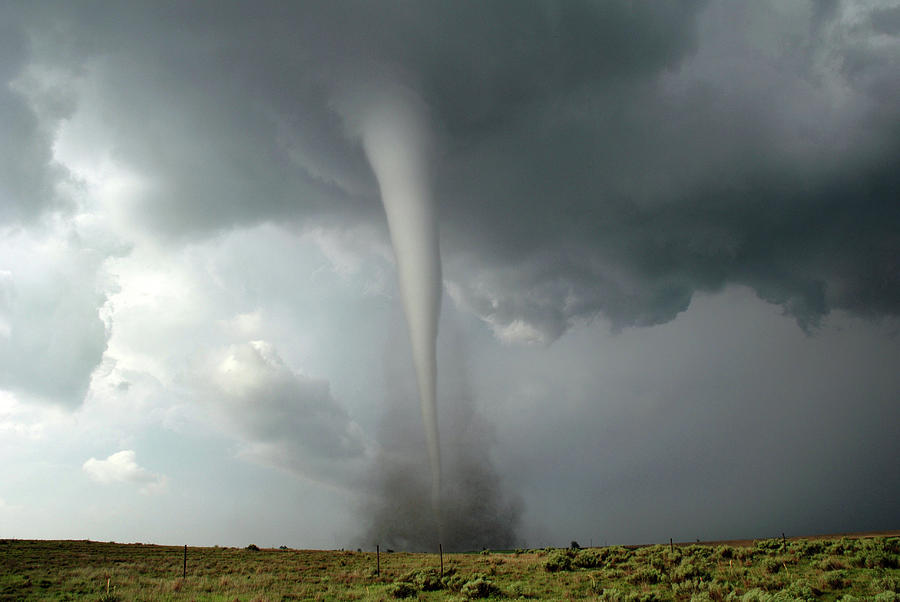
Safety tips during tornado season
The season for tornadoes can be a real pain in the rear end. Those who live in areas prone to these types of storms know it all too well. They’re nothing short of terrifying. Having said that, understanding and implementing safety precautions can help alleviate some of the stress you experience. It’ll also ensure you and your loved ones are safe during one of these events. Here are some important things to keep in mind:
1. Make a plan: Designate an area or room in your house where everyone can take cover should a tornado hit. Please choose one that’s safe, like a basement or an interior room on the lowest level of the house. Obviously, make sure every family member knows what to do if this were to happen.
2. Stay informed: Keep your eyes and ears open when there’s bad weather about by paying attention to local news outlets and using weather apps on your phone, tablet, or computer device things like Accuweather will do perfectly fine here! Be aware of watches and warnings issued by ———— (I would mention the acronym) they’re not joking around when they say something is serious! Also be sure to familiarize yourself with signs that could indicate one is near you.
3. Create an emergency kit: In case you have no clue what this is.. it’s essentially just putting together all the necessary supplies that people would need if they were stuck somewhere without power/ running water for days… so think flashlight, batteries, snacks that don’t need refrigeration etc… By doing so you’ll be prepared and more comfortable should this happen! Also always check all expiration dates regularly!
4. Don’t wait to take shelter!: If a warning has been issued or if you see signs of one nearing then PLEASE hurry up and go find shelter! Move quickly into whatever designated space you choose when making your original plan (step #1). Once inside I recommend using anything possible as protection, something as simple as covering your head with a blanket will do.
5. Communication is key: Create an emergency phone tree with family and friends to make sure everyone has a way to contact someone when they need help or when they’re safe. It’s also smart to Establish a point of contact who lives in another area that won’t be affected by the storm since local cell towers & networks could go down.
6. Stay updated after the storm: Just because the dangerous weather event is over doesn’t mean it’s time for you to run outside yet, sweetie! There could still be power lines on the ground, gas leaks all about, or even debris blocking doors… so first listen to what authorities tell you before doing anything dumb!
Being prepared for tornadoes is extremely important, but it’s just as important (if not more) to stay cautious and calm during these dangerous events. By following these tips and staying vigilant you’ll get through anything life throws at you!
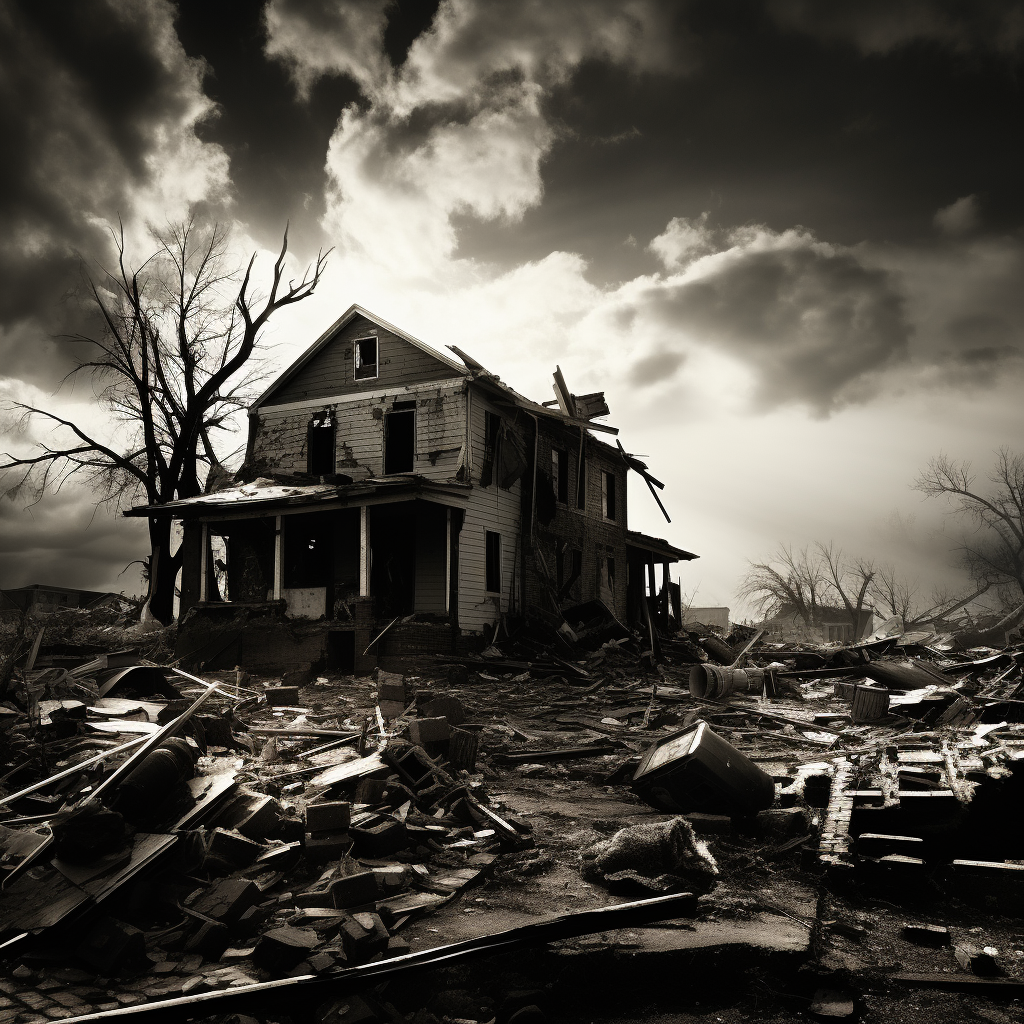
Conclusion: Preparing for tornado season and staying safe
As we inch closer to tornado season 2023, it’s important to start thinking about what you need to do to prepare yourself and your loved ones. Understanding how tornadoes form and implementing safety measures will help minimize the risks associated with these destructive storms.
One of the first steps in staying safe is staying informed. Keep track of local authorities’ and meteorological agencies’ updates on tornado watches and warnings. A weather radio or smartphone app can be a reliable way to get alerts and timely updates.
Your household should also have a plan in place for when a tornado hits, including understanding the impact of tornado damage and how to seek shelter from flying debris. Designate a safe room or area away from windows, preferably in the basement or an interior room on the lowest level of your home. Stock this space up with emergency supplies like a first aid kit, bottled water, non-perishable food items, flashlights, and a battery-powered radio.
Practicing tornado drills with your family ensures that everyone knows what they’re supposed to do when the time comes. Teach children why they shouldn’t seek shelter near windows or exterior walls during a storm. If you live in an area that frequently experiences tornados, consider investing in your own shelter or safe room.
Familiarize yourself with signs of an approaching twister so you know when it’s time to act quickly. Dark skies tinged green, large hail, roaring sounds similar to that of freight trains, and visible rotating funnel clouds all indicate that there may be a tornado nearby. If any of these signs appear, find shelter immediately.
Prepare for communication breakdowns as well. Make sure your cell phone is always charged and assign someone outside affected areas as your family’s point person for more information during emergencies.
In summary: Being informed about current conditions is key; create a plan for yourself; practice necessary precautions; learn how to identify when one is coming; assign designated people for certain tasks if needed.

